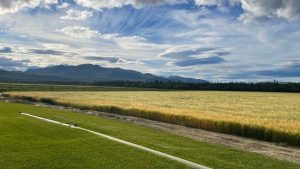Co-management of Northern Resources: A Comprehensive Analysis

In the realm of Northern politics and environmental management, one of the most significant innovations arising from the settlement of Aboriginal land claims has been the establishment of public institutions tasked with co-managing natural resources. This collaborative approach, known as “co-management,” has evolved over the years, with various definitions and interpretations. However, at its core, co-management involves local to regional-scale institutional arrangements designed to distribute control and decision-making authority over specific resources, such as wildlife, fisheries, lands, protected areas, and water, between governments and resource users.
The Evolution of Co-Management
Co-management, as a concept, has its roots in the early 1990s (Berkes, 1991) and has since been shaped by the experiences and insights of researchers and practitioners (Natcher & Hickey, 2005; Stevenson, 2006; Armitage et al., 2011). It was envisioned as a way to bridge the gap between government agencies and resource-dependent communities, promoting shared responsibility for resource management.
Challenges in Co-Management Implementation
While co-management represented a promising path forward, its implementation has not been without challenges. In Northern regions, the adaptation of governments to this new approach has been a complex process, characterized by phases of both acceptance and resistance (Penikett, 2006). This pattern is expected to persist as co-management continues to evolve.
However, an unexpected threat to the foundational principle of co-management has emerged from academia. Some critical academic voices have labeled co-management as a tool for co-opting Indigenous Peoples, fostering cynicism among those who engage with these systems. This perception could inadvertently empower those who seek to exploit Northern peoples and their resources.
The Semantics of Co-Management
In practice, some government agencies have started using the term “cooperative management” instead of “co-management” to avoid the implicit acknowledgment of power-sharing. However, this shift in terminology doesn’t absolve governments of their responsibilities to Indigenous Peoples outlined in land claim agreements and other legal documents.
Case Study: The Peel River Land Use Planning Process
One tangible example of challenges in co-management implementation can be seen in the Peel River Land Use Planning Process in the Yukon. The 1993 Umbrella Final Agreement established a co-management policy process for land use planning in the territory. After seven years of work, a plan was proposed in 2011, but it faced opposition from the Yukon government due to the extent of protection recommended. The government unilaterally altered the process, leading to legal action by multiple First Nations and environmental organizations. Ultimately, the Yukon Supreme Court ruled in favor of these groups, highlighting the complexities of implementing co-management within the context of land claim agreements.
Co-Management as a Tool for Self-Determination
Co-management has faced criticism over the years, with some suggesting that it falls short of promoting self-determination among Indigenous Peoples. However, it’s important to recognize that co-management institutions were designed to be independent of political influence, a key aspect of their effectiveness (Peel Watershed Planning Commission, 2011). The focus should be on fostering collaboration and partnership.
The Need for Reevaluation and Research
While co-management has evolved, the comprehensive evaluation needed to definitively determine its success or failure across Northern Canada has yet to be conducted. Such assessments are challenging due to the diversity of voices, goals, and contexts involved. Furthermore, co-management is not a one-size-fits-all solution; it involves trade-offs between various social, cultural, political, economic, and ecological objectives.
Embracing Indigenous Research Methodology
To enhance co-management research, a shift toward Indigenous research methodology is warranted (Chilisa, 2013). This approach emphasizes Indigenous sovereignty, cultural context, and ways of knowing. By grounding research in practitioners’ perspectives and Indigenous values, co-management can be enriched and improved.
Moving Beyond Co-Management to Co-Governance
In some regions, discussions are evolving beyond co-management toward “co-governance.” Co-governance represents a more comprehensive sharing of both authority and control over resources, going beyond technical duties (Feit, 2005; Simms et al., 2016). This shift reflects the growing recognition that co-management alone may not fully realize the vision of self-determination outlined in land claim agreements. Co-management of Northern resources is a complex and evolving field that has faced both internal and external challenges. While criticisms exist, it remains a valuable approach for bridging the gap between government agencies and Indigenous communities. The future of resource management in Northern Canada may lie in the evolution toward co-governance, which recognizes the need for shared authority and control. As we move forward, it is essential to embrace Indigenous research methodologies and engage in comprehensive, context-specific evaluations to ensure that co-management practices align with the goals of self-determination and sustainability.



